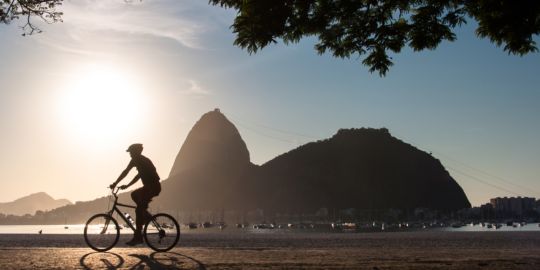During a visit to Porto De Galinhas two years ago, I observed that the local marmoset monkeys were particularly active at night and in the early morning hours. They frequently ran across the roofs of resort rooms, engaging in constant chirping. These creatures appeared to be both friendly and curious, even accepting fruit when offered. Have you encountered any issues with these monkeys causing disturbances or damage to your property? Additionally, how have they interacted with your pets, if at all?
Living amongst Marmoset Monkeys
Yeah, the monkeys........ Well, they are cute but there are a lot of reasons that they should be treated as wild animals and kept at a distance.
The first thing to consider is disease. Simply search on the two words and you should see an article from Purdue and another from NIH:
zoonosis marmosets
If you like birds you might also not want to attract them. The love eating bird eggs.
Lastly, and possibly most importantly, once marmosets ID your house as a food source they'll be regular visitors and little will stop them from making themselves at home on your fruitstand, pantry or dinner table where they'll poop and pee on everything.
When our local troop arrives we have to close up all windows and doors.
mberigan
@mberigan Thanks for the fast feedback! (Note to self never feed the marmosets) What part of brazil are you from? I seen a documentary not too long ago and it seems they get into occasional turf wars with other marmoset families over specific trees. Have you ever had an incident where they got into your house?
John,
I've only observed white tufted marmosets (Callithrix jacchus) here in PB and don't see any other species listed in INaturalist (a good app to learn about Brazilian wildlife) in my state. The Callithrix jacchus was originally only found in the northeast but have spread. I've seem them atop Sugarloaf in Rio and in Sāo Paulo.
We have a "marmoset problem" at our urban home. Porch parties require constant attention to keep them away from the table - even with people seated. Doors have to be kept closed (not so good in a warm climate) because they raid our kitchen.
I like marmosets but discourage everyone from providing ANY incentive to them.
mberigan
@mberigan PB has a pretty landscape. When my wife and I drove from Recife to the Serrambi resort we really enjoyed seeing the farm fields with crops and hills. The natural shallow tide pools at the beaches are really nice as welll.
02/12/24 I've only observed white tufted marmosets (Callithrix jacchus) here in PB and don't see any other species listed in INaturalist (a good app to learn about Brazilian wildlife) in my state. The Callithrix jacchus was originally only found in the northeast but have spread. I've seem them atop Sugarloaf in Rio and in Sāo Paulo. -@mberigan
The last time we were in Ouro Preto (MG; July 2019), we saw troops of the related black-tufted marmosets foraging through the city in the afternoon. They, too, seem to have colonized urban environments, where they find food plentiful and predators few.
@abthree Do you have interesting wildlife in the area you area currently in?
Here on the island of Itamaracá in Pernambuco, (about the same distance north from Recife that Porto de Galinhas is south), we have large areas of protected rain forests - about 70% of the island. Here live thousands of marmosets, but not sure the species, among many other animals.
However I have never heard of them eating birds' eggs, maybe because we have an abundance of all types of fruit trees in these forests, and these are easier pickings?
Occasionally I hear of people persuading them to come down from running across the electric cables with offers of bananas, but I have never heard them become a nuisance - even a pest. Maybe, due to the huge amounts of fruit, they have developed different habits, and are much more wary of humans?
02/13/24 @abthree Do you have interesting wildlife in the area you area currently in? -@john8670
Yes, indeed! Mostly along the forest/urban boundary: my husband once stopped traffic on a road through the campus of the Universidade Federal do Amazonas so that a three-toed sloth and her baby could finish crossing safely -- and slowly!. Any day trip to see the Meeting of the Waters generally includes a stop to see the river dolphins (botos and tucuxis), who are wild but come by for free fish, and the arapaima (pirarucu) that are raised. There are also agoutis (cutia) that look like small, sleek capivaras, giant otters (ariranha) and manatees (peixe-boi). The monkeys on the paths to see the Vitória Régia waterlilies are especially aggressive (bad training from tourists!) and will grab and steal anything hanging off a person unsecured. There are undoubtedly jaguars, but I've never seen one myself.
Bird life flourished thanks to the dispersal of the feral cats during the pandemic. The air is always full of Amazon parrots of various species, all chattering like a bunch of hyperactive first graders at recess. Great egrets, prehistoric looking green ibises, forktailed flycatchers, and large-billed terns are seasonal visitors. One of the most exciting things that happened during the pandemic was that scarlet macaws recolonized central Manaus for the first time in decades. The flock is now up to seven individuals, and we see and hear them almost every day.
I'm sure that most expats have house geckos, at least in Northern and Northeastern Brazil. We enjoy watching their antics, and listening to them chirp at night. I never knew that lizards could sing!
@abthree
It is quite common here as well to see sloths crossing roads. Most of the time locals pick them up and help them across as they are so slow...! We have as well - they are surprisingly light.
@abthree Wow! Thats a lot of exotic wildlife. its good to see different animals returning after years thanks to the covid lockdowns. It must be pretty cool seeing all those exotic birds. It sounds like the one animal is the capybaras cousin.
@Peter Itamaraca I bet they appreciate the help.
@Peter Itamaraca Itamaraca looks like a beautiful place ill have to fly into Recife in the future and check it out.
Stayed at a hilltop pousada in Praia do Pipa, just south of Natal. Forgot the name......
The place was populated by these aforesaid monkeys.........totally tame and interactive.........probably 50 or so.
Also, they had a family of 6-7 huge peacocks that roamed everywhere on the grounds as well. You'd be eating dinner outside at the restaurant and 3 feet away was this huge peacock spreading it's gold and blue feathers. while the monkeys sat politely at your feet waiting for food.
On the subject of Capybara's i was walking the beach in Barra on NYE and I saw this baby about a foot long walking along on the grass. I love capybara's......
@Gasparzinho 777 That Pousada sounds like a really cool place. Having beautiful birds next to you along with the marmosets behaving.
I'm also a big fan of Capybaras. I still remember the first time I saw them in person near the Sao Paulo, Sao Paulo Garulhos airpot.
@john8670
Search Itamaraca Tourism for more info...
@john8670
YES! The very first time I saw them in real life was at GRU. Sadly, I havent seen them there in my most recent trips.
Jealous. Most I see in reef are about scorpions. Flying ants the size of your thumb and right now thousands of cicadas lol









